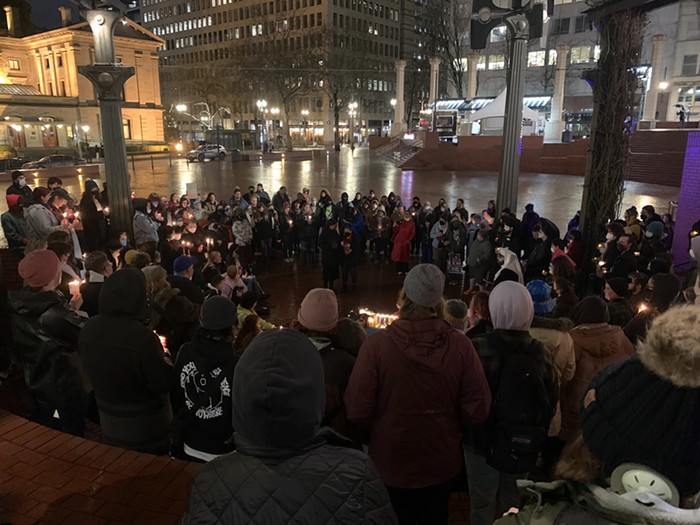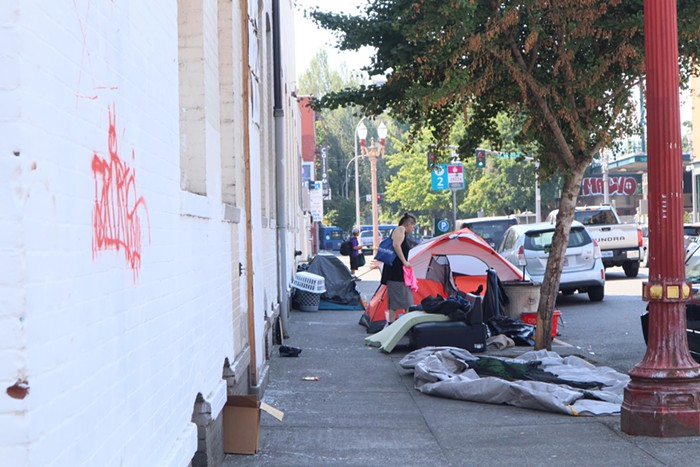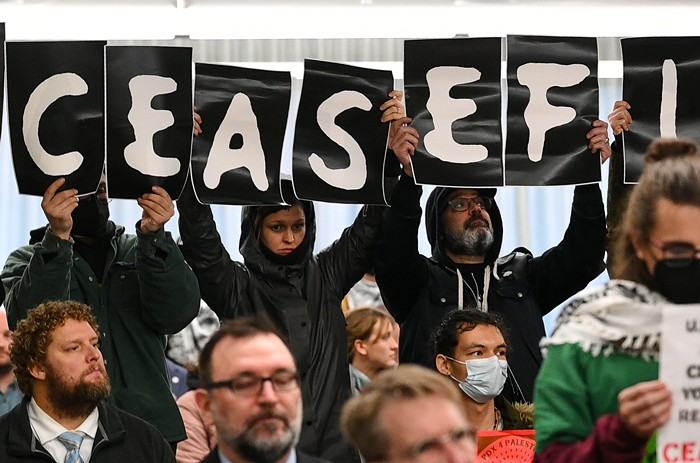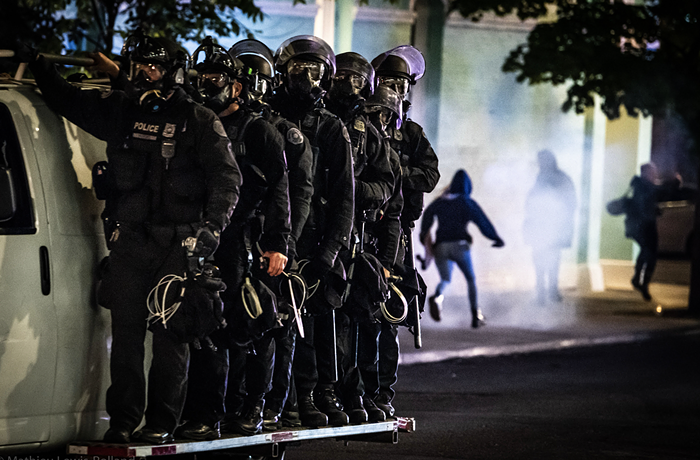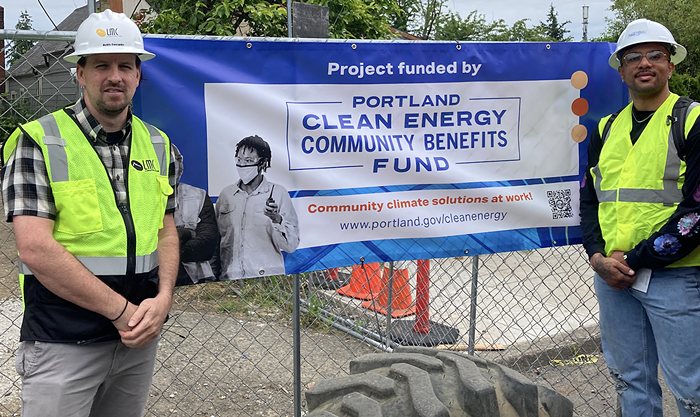On October 21, 2023, James Brian Fenimore was walking on the sidewalk on SE 82nd Avenue near Burnside Street, heading to run an errand, when a drunk driver veered off the street and struck him with a minivan. Fenimore died as a result of the crash.
According to Montavilla News, Fenimore, 66, was an artist who previously lived in the low-income housing complex Milepost 5 in Montavilla. The complex housed an artist collective that Fenimore joined, making friends in the creative community. Fenimore ended up losing his housing due to some logistical problems, but he stayed in touch with his friends from Milepost 5.
In a September open letter to the Milepost 5 community, Fenimore wrote that although he lost his apartment, he “still had something [he] never had in 65 years.”
“I felt love and compassion and hope in a violent, angry world,” Fenimore wrote.
Fenimore was one of a dozen unhoused people killed in a Portland car crash in 2023. When the Portland Police Bureau (PPB) began tracking the housing status of people killed in traffic crashes in 2021, it revealed just how susceptible people experiencing homelessness are to traffic violence. As general traffic fatalities in Portland have increased over the past several years, this disturbing trend has persisted: More than half of the pedestrians killed between 2021 and 2023 were unhoused when they died.
The Portland Bureau of Transportation’s (PBOT) latest Vision Zero update, which Portland City Council adopted earlier this week, states the “staggeringly disproportionate impact on this population speaks to the extreme risk of persistent exposure to traffic, often on high-speed streets.”
But some city officials are asking if Portland’s current fentanyl crisis could have anything to do with it. This question strikes some transportation advocates as a distraction from the conversation about traffic safety. Advocates also say blaming fatal crash victims doesn’t align with best practices around addressing traffic violence, which emphasize systemic change and recognize human fallibility.
Is there a connection between the fentanyl crisis and traffic deaths?
At the April 17 City Council meeting, Commissioner Dan Ryan asked PBOT staff and Portland Police Bureau (PPB) officers for the “real data on why people are dying,” specifically referring to homeless pedestrians.
“Yes, they were hit by a car,” Ryan said. “But we can assume with some of the data it’s because they are impaired while walking.”
Some of Ryan’s assumptions appeared to be based on his own experience driving around the city.
“I drive in areas that have a lot of people who are homeless that appear to be in their own world, jumping out in front while I’m driving in Old Town, doing a dance,” Ryan said. “Bless their heart, I just think they’re going to be one of the statistics by the end of the day…Let’s be honest here, when we launched [Vision Zero] a decade ago, we didn’t have fentanyl, we didn’t have the poisonous drugs that we have on our streets today.”
Ryan also expressed frustration with PBOT staff for the “undertone of car-shaming” he perceived in the Vision Zero report at the expense of looking at the “deeper conditions causing some of our challenges with pedestrian deaths.”
Ryan said he believes this topic gets buried in traffic safety conversations because it’s sad and uncomfortable, but “if we don’t dig deeper into this dialogue, we’re just not going to get to the truth.”
But getting that data may not be feasible. PBOT staff and police say getting blood results about whether a fatal crash victim had drugs in their system can be difficult, citing medical privacy laws that limit what the medical examiner can release. They do, however, say driver impairment has risen in recent years, to dangerous effect.
Commissioner Rene Gonzalez wanted more specifics about the potential role of drugs in Portland’s increasing traffic crash deaths.
“When we talk about impairment, would you ballpark what percentage is alcohol and what percentage is drugs?” Gonzalez asked at the April 17 meeting.
PPB Sergeant Ty Engstrom said while he couldn’t provide a number, the police are “definitely seeing a rise in drug-impaired driving since the legalization of different types of impairing substances.”
Marijuana, legalized in Oregon in 2015, is the only substance recently legalized for purchase in the state. Measure 110, passed in 2020, decriminalized possession of small amounts of hard drugs, but did not legalize their use, or purchase.
Gonzalez granted that alcohol is one component of the problem that needs to be regulated, but said “if we’re talking fentanyl or meth, that’s a whole other ball of wax.”
Traffic safety advocates say this rhetoric—which was not challenged by PBOT leaders in any significant way at the council meeting—flies in the face of the “safe system” approach to traffic safety, which the bureau says it ascribes to. The safe system approach is “planned, designed, and operated to be forgiving of inevitable human error and physical limitations.” It relies on infrastructure and design to prevent serious injury and death, and encourages systemic change rather than expecting different behavior from individual road users.
“I am highly skeptical that a root cause of the problem is mental health issues and substance abuse. This is also hugely contradictory,” Transportation safety advocate Sarah Risser told the Mercury after the meeting. “The Vision Zero plan and update draws attention to the safe system approach, which is based largely on the notion that humans are fallible and that streets should be safe for distracted or impaired pedestrians or cyclists... I believe Portland's Vision Zero plan is about signaling a desire for road safety and not about actually doing the hard work to protect all road users."
In 2022, Mayor Ted Wheeler made an executive order banning homeless camping along high-crash corridors, ostensibly to help curb the rising trend of traffic fatalities and make Portland’s streets safer for everyone. But he also faced pushback from local advocates who saw the orders as a thinly-veiled way to further criminalize homelessness instead of addressing the real causes of traffic violence.
A February 2022 statement signed by transportation and homeless advocacy organizations including Oregon Walks, The Street Trust, Street Roots Advocacy, and Sisters of the Road was highly critical of Wheeler’s executive camping ban on high-crash corridors.
“The presence of unhoused people does not make our streets unsafe; rather, poor roadway design, ongoing neglect and deferred maintenance, recklessness in the form of speeding, operating a vehicle while impaired by drugs or alcohol, and other dangerous driving behavior are all well-documented reasons why there is this alarming uptick in deaths,” the statement read.
The majority of traffic crash deaths in Portland occur on the same 8 percent of city streets—busy high-crash corridors with a road design that encourages speeding. City staff pointed out at the April 17 City Council meeting that when PBOT is given the resources to redesign a dangerous roadway, safety outcomes improve.
“Where we invest, we see changes to safety outcomes,” Dana Dickman, PBOT’s traffic safety section manager, said. “We focus on designing safe streets to protect human lives.”


